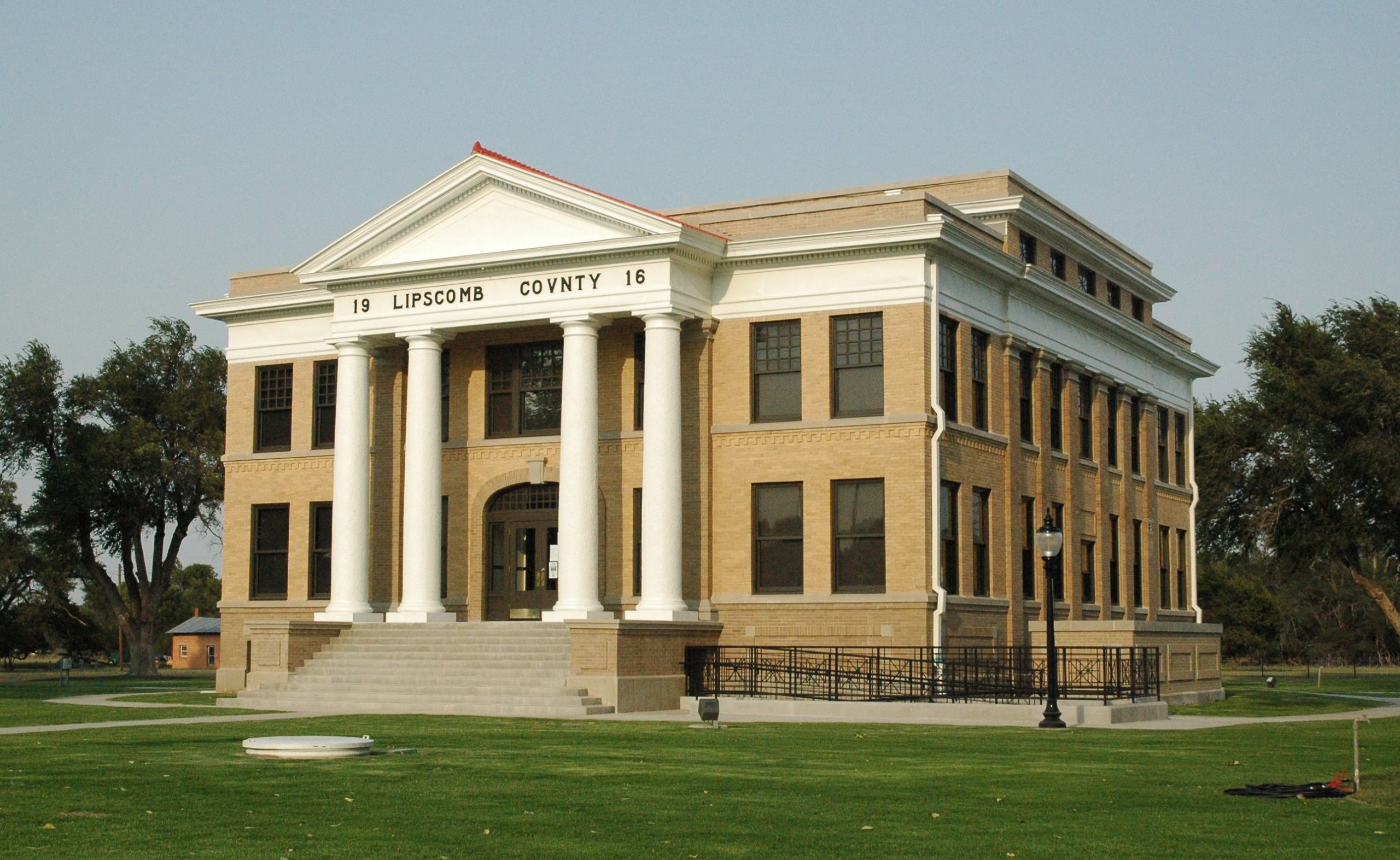
The people of Lipscomb County can be a determined, persistent lot. When they decided to restore their courthouse in 1999, they did not realize it would take 22 years; however, they never gave up. Lipscomb County celebrated the rededication of the Historic Courthouse on Sept. 11.
After the Texas Historical Commission (THC) accepted their Historic Courthouse Preservation Master Plan in 2020, Lipscomb County made successive applications through the THC Grant program over nine times. Because 1972 misinformation resulted in installation of a massive elevator tower on the south side of the building as well as aluminum windows, Lipscomb County was denied funding. Finally, on advice of the Texas Historical Commission, an application was accepted for an emergency grant to remove the elevator and restore the windows. Thus freed, on the next review of funding a restoration grant was approved for the $5.5 million Lipscomb County Courthouse restoration.
The Lipscomb County Courthouse was designed in 1914 (occupied in 1916) by William R. Rice of Lubbock. Arthur Weinman, AIA, served as the restoration architect, and Premier Metalwerks, LLC, was the restoration general contractor.
The Classical Revival exterior is complemented by a horizontal cast stone foundation and windowsills in the brick façade. Horizontal metal fascia and cornice above the three floors fuse into the architrave of the pediments at both entries. The stamped metal Mission design gable roofs terminate into a second higher cornice above the courtroom clerestory windows. Symmetrical east and west main entries to the first floor are connected by a main hallway with a high ceiling and ceramic tile floor. The classical gable entries have columns on each side, with monumental concrete steps rising up to the building entries. Double hung wood windows have single large panes, with multiple panes in the upper sash on the basement and second floors. The clerestory windows on north and south elevations of the raised courtroom have a classical diagonal mullion style taken from Classical sources and found in Prairie Style and Art Modern work.
Although ceramic tile corridors in the first and second floors remained, offices all had wall-to-wall carpet installed over original longleaf pine flooring. Restoration removed all remodels.
All first and second floor offices have the restored, tall plaster ceilings of the original design. The concrete frame of the building is expressed on the interior, with plaster partitions meeting columns at corners and beams along partition tops. The building has a ceiling cornice only in the courtroom. Restoration includes a new, wood framed building directory and a county bulletin board in the first-floor corridor, along with re-installation of the full-size display case and frame for the Lipscomb County Centennial quilt.
A fusion of both Classical Revival and Prairie Style design are noted in the courthouse design, while the monumentality and symmetry are Classical. The interior woodwork, doors, panel, trim, balcony stairs, and décor are all Prairie Style in dark mahogany stain. This fusion is most clearly seen in the courtroom where pilaster columns, the cornice, and the courtroom canopy reflect the Classical, and the doors, transoms, trim work, balcony rail, and clerestory windows reflect the Prairie Style influence. Of interest, when the courtroom furniture was restored, project managers made certain that hand-written pencil notes on the interior of the bench drawers made by a number of earlier county and district judges were preserved.
Although a small building (12,754 sq. ft.) by Texas courthouse standards, the building’s location and monumentality make the most of its design in its iconic siting and presentation. – Submitted by Arthur Weinman Architects









